Hopes raised for M&A improvement in 2024
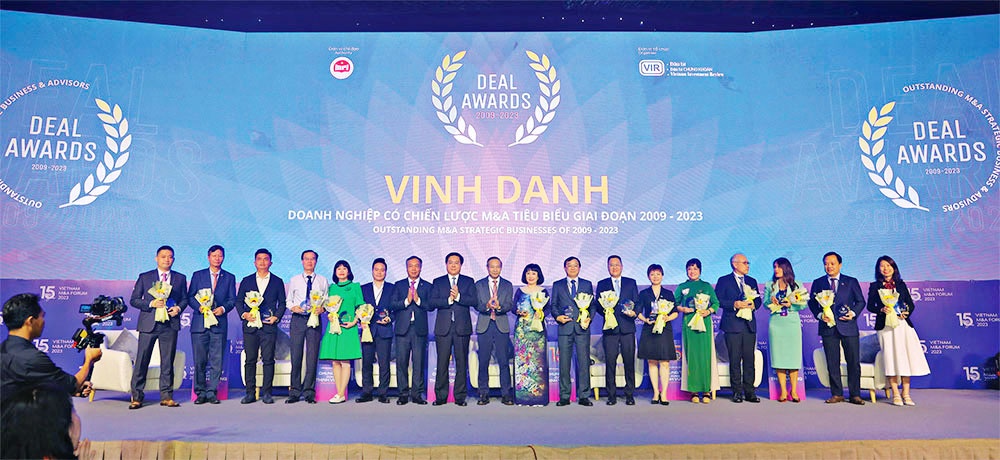 |
At the Vietnam M&A Forum held by Vietnam Investment Review last week in Ho Chi Minh City, Warrick Cleine, chairman and CEO of KPMG in Vietnam and Cambodia, said that merger and acquisition (M&A) activities and global transaction values were affected by stagnation, as investors face political and macroeconomic instability around the world, along with rising global inflation.
“The tightening of monetary policy in major economies, leading to higher interest rates, has also impacted emerging markets, making transactions more expensive and negatively affecting the quality and quantity of transactions in the market,” Cleine said.
In Vietnam, although inflation has been controlled below 4 per cent so far and GDP growth is expected to be at 4.7 per cent in 2023, the country is still affected by a lack of movement in the global M&A market.
The total transaction value in the first 10 months of 2023 reached $4.4 billion, down 23 per cent compared to the beginning of the year. Of those, 80 per cent of deal value was contributed by financial services, real estate and healthcare, according to KPMG.
However, Cleine said that Vietnam’s internal economic advantages are still being maintained, with stable foreign direct investment inflows and the government’s commitment to building infrastructure and economic reform is not declining.
“The temporary decline in the M&A market can be seen as part of a broader economic cycle. 2023 is a year when the market finds balance to move towards sustainable development for the period from 2024 onwards,” he said.
The market experienced a frenzy in value and volume led by domestic investors starting in 2020 as many strengthened their market share and vertical integration. However, such unprecedented capital mobilisation among domestic investors ended at the end of 2022, peaking at over $1.3 billion in deal value.
Growth drivers for Vietnam
So far this year, as domestic investors have turned defensive and reassessed their strategies, their share in M&A value has now fallen to $161.6 million, or around 4 per cent of the total reported deal value.
Unlike the prior three years when domestic investors played a major role in Vietnam’s M&A market, foreign investors took up all the top five spots by deal value in the first 10 months of this year. Japan, Singapore, and the US continued to be among the most active foreign investors.
Together they accounted for more than 70 per cent of the total reported deal value. Foreign investors’ dominance in 2023 likely signals the market shift from opportunistic to more strategic long-term investments in strong and selected sectors.
Assets that promise scalability and integration into broader regional trends, as well as capitalising on the country’s rising fundamental demands and changing global supply chains, will likely continue to draw in foreign investors.
Meanwhile, according to Binh Le Vandekerckove, founder and CEO of ASART Deal Advisory, some of the drivers for market growth were the Vietnamese government’s flexibility and the country’s deepening participation in free trade agreements.
According to ASART data, after a stall in 2012, Vietnam’s M&A activity saw a boom in 2016-2018, with up to $16 billion poured into firms in the Southeast Asian country in 2016, including unannounced deals, Vandekerckove said. After peaking at $10.8 billion in 2021, the M&A market in Vietnam dwindled to $6.8 billion in 2022 and $4.4 billion in the first 10 months of this year, data from ASART released.
The biggest deal of 2023 so far was Japan’s SMBC spending $1.45 billion to acquire a significant minority stake in VPBank in March. The transaction is also the largest deal ever recorded in the Vietnamese banking industry.
The healthcare industry also had its largest deal ever in 2023 when Thomson Medical Group, one of Singapore’s largest private medical service providers, spent more than $380 million to buy back a controlling stake in FV Hospital in July. This also marks the first time Thomson Medical Group entered Vietnam.
Although M&A activities of the consumer industry in general decelerated due to unfavourable macroeconomic conditions, the consumer discretionary industry still witnessed a large deal made at $200 million, when renowned US investors Bain Capital invested in Masan Group in October. This deal marks an important milestone for the domestic consumer industry and shows the attractive prospects of this industry.
For the real estate industry, although the legal environment remains challenging in 2023, strategic investors still actively pursue many high-quality and strictly legal real estate assets. Therefore, the real estate sector has witnessed two major deals this year, with transaction values on track to exceed last year’s billion-dollar level.
The largest deal in this field was in January, ESR Group, one of the largest asset management companies in Asia-Pacific, led a group of investors spending $450 million to acquire a strategic stake in BW Industrial Development.
Elsewhere, Malaysia-based Gamuda Land in July acquired all shares, worth $316 million, in Tam Luc Real Estate Group to expand its portfolio in Vietnam. Gamuda Land has set out a plan to turn the project into a high-rise complex project with a total development value of $1.1 billion, located in the centre of Thu Duc city.
Hoping for more progress
Vietnam’s M&A market is ready for growth due to many economic advances and reforms to draw in foreign investment in 2024.
According to Cleine of KPMG, investors are interested in production for export and investing in supporting technology industries to help Vietnam export.
“There is a shift of foreign businesses to reduce their dependence on China. Investors have confidence in the consumer market in Vietnam. Therefore, Vietnam is an extremely attractive destination,” Cleine said. “Especially as Vietnam and the United States upgraded their relationship to a comprehensive strategic partnership this year, US investors are in the mood to move to Vietnam, which will then promote an increase in M&A.”
M&A transactions are likely to increase in key sectors of green energy, technology, real estate and healthcare due to policy support and increased demand. The investment trend in these industries is due to infrastructure growth, and technology is driven by digital transformation.
The health sector is also expected to be driven by changes in population. The real estate industry continues to be buoyant thanks to the demand for high-quality assets. Growth motivations in 2024 include strong overseas funding inflows, thanks to political stability and trade agreements that Vietnam signed with the international community.
Furthermore, with inflation controlled below the target of 4 per cent, the International Monetary Fund forecasts GDP growth to rebound to 5.8 per cent in 2024 and 6.9 per cent in 2025, and public debt remains below the legal ceiling of 60 per cent of GDP: these platforms suggest a favourable year for investors targeting strategic opportunities in the Vietnamese market.
| Tran Duy Dong - Deputy Minister of Planning and Investment
Over the past 15 years, with more than 5,000 deals totalling $66 billion, the merger and acquisition (M&A) market in Vietnam has become an effective capital mobilisation channel, contributing to diversifying capital attraction for the Vietnamese economy. However, in the context of low global growth, global M&A activities in 2023 have not gone entirely smoothly. According to research by GlobalData, the total number of M&A deals as of the end of October decreased by 16.8 per cent compared to the same period last year, of which the number of deals in Asia-Pacific decreased by 11.6 per cent. As part of this general trend, Vietnam’s M&A market is also declining, especially compared to its peak in 2021, with a total deal value of more than $10.8 billion. By the end of October, according to KPMG’s estimates, the total deal value of the Vietnamese market had reached just over than $4.4 billion, and it is not expected to reach the figure of $6.8 billion that was seen last year. However, despite these issues, Vietnam’s M&A market still provides many opportunities thanks to its strong fundamentals. The government has proactively and effectively responded to the challenges. Investment growth drivers continue to be strongly promoted, and many key national projects have been put into operation. Economic diplomacy activities also seen historic achievements, opening up new opportunities to attract foreign investment, especially in relation to technology. According to S&P Global’s 2024 Big Picture Outlook report released in November, although global activities have slowed down for most of 2023, there are many potential factors motivating investors. The Vietnamese investment market in general and the nation’s M&A market in particular continue to be considered attractive by international investors, thanks to the political stability and impressive economic growth. The domestic consumer market also continues to grow rapidly. As of November 20, the total foreign investment capital registered in Vietnam reached nearly $28.85 billion, an increase of 14.8 per cent over the same period last year. Of this, capital contributions and share purchases reached nearly $5.97 billion, an on-year increase of 46.4 per cent. Further encouragement is required for domestic businesses to reconsider their strategies, seek new growth models, and focus on restructuring production and business activities in a more long-term and sustainable direction. Luu Thi Thanh Mau - CEO, Phuc Khang Corporation
International investors identify Vietnam as an ideal destination and most deals are concentrated in Vietnam compared to the Southeast Asian and Asian markets, thanks to the government and agencies focusing on changing policies and institutions accordingly to integrate with the world’s economy and create a more equal business environment. Investors currently do not only focus on quick and efficient profits returns, or economic-related index issues, but pay more attention to factors related to the environment, society as well as management capabilities. In the process of implementing international deals and joint ventures with foreign investors, I realise that businesses need to prepare many things. Firstly, they must clearly determine their M&A goals and the partner’s strengths and expertise that the business can learn from. Secondly, they must understand the culture and identity of the businesses and countries they wish to cooperate with, the welfare and trade agreements of the countries with businesses doing M&A with them. And the third and most significant thing is to prepare a thorough M&A plan and strategy, including a team of advisors, legal staff and human resources to implement the deal and to make it successful. More important is to control the whole process and to make it successful. The ultimate goal is a win-win result for both sides. Truong An Duong - General manager of North Vietnam & Residential Frasers Property Vietnam
In any M&A deal, we prioritise choosing projects in strategic locations, at the hub of greater Ho Chi Minh City and Hanoi with the ability to connect directly to major provinces, airports, seaports, or easily accessible transportation infrastructure. In the centre of value chains, areas where many queen bees gather to engage many supporting manufacturing businesses concentrate and create the essential excitement for the industrial picture of the region. We are eager to collaborate with like-minded and long-term trusted partners who have valuable resources and experience to develop significant projects together. Partners have completely ready-made infrastructure, vast experience, and a high market reputation. The company has also diversified so that we can lead and act responsibly as an investor, developer, and operator, whether in terms of delivering quality products, providing excellent customer experiences, becoming a net-zero carbon corporation, or building connected and healthy communities. Dang Van Thanh - Chairman, TTC Group
In a thriving and open economy like Vietnam’s, well-managed M&A processes can unlock tremendous opportunities. The dual benefits, for both buyers and sellers, stressing timing as a critical factor. The seller must recognise the peak moment to showcase their strength, while the buyer should view M&As as a strategic move to expand at the right time. This approach requires courage and a willingness to embrace the inherent risks and rewards. As entrepreneurs, our aspirations always lead our strategy. At TTC, this has meant harnessing the power of M&As to fulfil our ambitions over our 44-year history. This strategy has driven TTC’s growth and positioned it as a leader in Vietnam’s business landscape. Responsible entrepreneurs should actively seek collaborations when they sense limited scope for individual growth, viewing M&As as a growth catalyst from a buyer’s perspective. In an ever-changing market like 2024’s is likely to be, the ability to quickly identify and capitalise on these opportunities is crucial. However, the true challenge lies in merging the cultures of two distinct entities. At TTC, we focus on preparing our employees for this transition, ensuring a harmonious and productive integration. Le Minh Phieu - Managing partner, LMP Lawyers
An M&A deal passes a very long road and there are many possible problems that the parties need to overcome. Those are the differences in culture, legality, way of thinking, and educational background. Consultants need to help the parties know the relevant laws and all aspects of partners in the journey so that the parties can understand and negotiate with each other. Legal obstacles and legal regulations are the biggest barriers that consulting lawyers need to support businesses well in order to have a perfect deal. Both sides can overcome those obstacles and come together. In addition, the wishes of the parties are different and conflicting, leading to failure to negotiate. Lawyers will find a solution to reconcile both parties to be able to cooperate successfully. Currently, the world and Vietnamese economies are struggling in challenges but industries that serve basic needs will continue to grow. Food production, medical treatment, healthcare, new technology, semiconductor chips, and future control industries will attract M&As. In the next 3-5 years, I am sure that Vietnam’s landscape in these areas will be very exciting. Binh Le Vandekerckove - Head of M&A Advisory, ASART
Ten years ago when the M&A market hit bottom, everyone was pessimistic. But from 2016 was more positive and in 2017 alone, it is estimated that up to $16 billion was poured into the Vietnamese market, including deals that were not publicly announced. This means that opportunities are always there and available, and in a few years we will see Vietnam’s M&A market reach $20 billion. In this development, the government plays an extremely important role. When laws are updated and amended, the M&A market will accelerate. We hope the Vietnamese government continues to pay more attention to this market. In addition, opportunities also come from Vietnam’s position as one of the most dynamic economies, having participated in well over a dozen free trade agreements. Doors of opportunities for attracting investments are open. We need to work together to help the market be more transparent, go deeper into the nature of the deals, and add value to the deals. Pham Duy Khuong - Managing director, ASL Law
This year the M&A market had a downward trend, but there are still certain groups that show growth and potential. For example, foreign businesses currently tend to focus on key projects related to ports and logistics. In addition, foreign investors are interested in the energy sector, especially wind power. And in the opposite direction, there are also Vietnamese businesses paying attention to foreign wind power markets. Although the overall picture is going down, there are still certain industries that are going up. In fact, nowadays there is a general trend of having a crisis once every 10 years. When in a crisis period, there are many businesses that need to be transferred because they are thirsty for capital. So the market now is for buyers. In short, it is a game that the market decides. Who can take advantage of the opportunity at this time and who dares to put down money at this time is an important factor. Angus Liew - Chairman, Gamuda Land Vietnam
Vietnamese real estate is an attractive destination for investors, including Gamuda Land. The demand for homeownership in Vietnam is huge, while the supply is limited. Furthermore, the population is not only large but also young and the middle class is growing. We chose the M&A method because it brings the fastest results in the real estate sector. The Vietnamese market is also suitable for Gamuda Land’s development strategy. In 2020 and 2021, M&As were not easy for foreign investors but 2023 has been a successful year for us, when we have completed three deals. In the Vietnamese market, many new laws related to real estate have been being revised. The legal environment is also becoming more favourable, which will further encourage investors. During the M&A process, the parties need to share everything frankly with each other. To be transparent is one of the most factors that bring two sides together. Nguyen Van Thien - Chairman of the board, Binh Duong Water-Environment Corporation
I view M&A transactions not as a predatory strategy, but as a means to extend support to struggling businesses, helping them to not only survive but to retain their businesses and assets. Our approach when investing our money is collaborative. We join the board of the company we invest in, focusing on improving their services and growing together, rather than aiming for a takeover. In fact, we have often come across companies deeply passionate about the water sector, companies that have invested in building plants in what is known to be a relatively stable industry. However, they’ve encountered difficulties and incurred losses due to their singular focus on investment without developing a full-fledged water supply network and services. This is where we come in, co-investing and aiding in the development of these networks and systems, providing professional services for mutual growth. Vu Minh Tien - Vice chairman, VIAD Group
M&A activities are a driving force in promoting economic development. After the pandemic, the total value of deals went down, but the average value tended to go up. This shows the current trend of businesses aiming for high-value deals to promote each other and cope with the broken economy. I think this will continue to be the trend in 2024 as the world economy fluctuates. Big deals in Vietnam recently came mainly from Japan, the US, and Southeast Asia, and this comes from the agreements that Vietnam has signed. As for the European Union, Vietnam has access to capital from this market, but is currently also being severely affected by supply chain disruption, leading to European also carrying out mutual M&A within their own borders. This is not only an opportunity to welcome capital flows from Europe, but also indicates potential for Vietnamese businesses to reach out to Europe to carry out more M&A activities. |
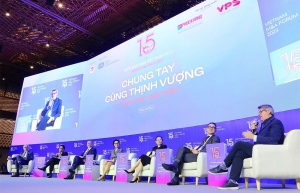 | Domestic groups emerge as top buyers Local businesses have become more mature in dealmaking strategies, with the increasing acquisition of both local and foreign targets. |
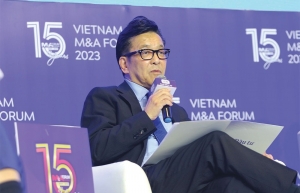 | Expansion in Vietnam a must for Japanese investors Japan continues to be one of the key players in Vietnam’s merger and acquisition market. At the Vietnam M&A Forum on November 28, Masataka “Sam” Yoshida, head of the Cross-border Division of RECOF Corporation, talked to VIR’s Thanh Van about what could be next for Japan’s investors. |
 | Vietnam has the tools to lead region in M&A deals Vietnam continues to be an attractive destination for overseas funding from other Asian countries, and potentially more from further afield. Pham Ngoc Bich, managing director of Corporate Finance at Ho Chi Minh Securities, provided insight to VIR’s Celine Luu on the evolving landscape of Vietnamese mergers and acquisitions. |
 | ESG in M&As: from global to Vietnam In the world of M&A, both in the global and local context, environmental, social, and governance (ESG) considerations are becoming increasingly important. |
What the stars mean:
★ Poor ★ ★ Promising ★★★ Good ★★★★ Very good ★★★★★ Exceptional
Related Contents
Latest News
More News
- Businesses ramp up production as year-end orders surge (December 30, 2025 | 10:05)
- Vietjet chairwoman awarded Labour Hero title (December 29, 2025 | 13:06)
- How to unlock ESG value through green innovation (December 29, 2025 | 10:03)
- AI reshapes media and advertising industry (December 29, 2025 | 08:33)
- FPT and GELEX sign deal to develop blockchain tech for global markets (December 29, 2025 | 08:29)
- Vietnam’s GDP forecast to grow by 9 per cent in 2026 (December 29, 2025 | 08:29)
- Women entrepreneurs are key to Vietnam’s economic growth (December 29, 2025 | 08:00)
- Vietnam's top 500 value-creating enterprises announced (December 27, 2025 | 08:00)
- The PAN Group shaping a better future with ESG strategy (December 26, 2025 | 09:00)
- Masan Consumer officially lists on HSX, marking the next phase of value creation (December 25, 2025 | 13:20)




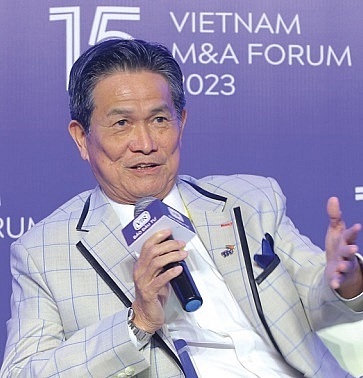

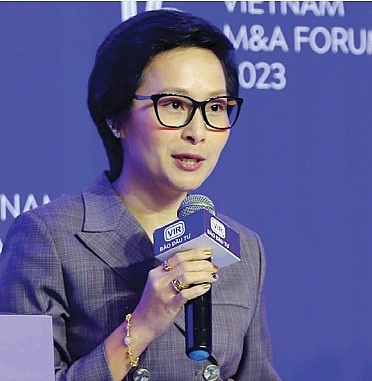

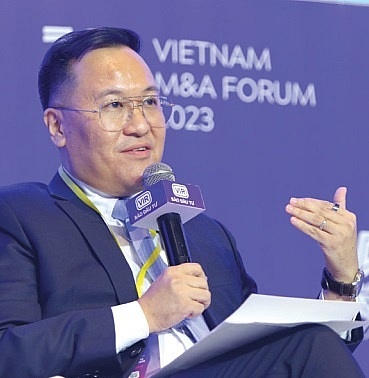
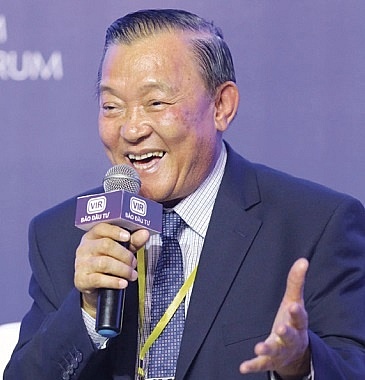

 Tag:
Tag:




















 Mobile Version
Mobile Version